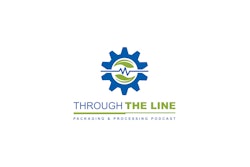Kalorama reports the following among the growth drivers for RFID: the need for enhanced efficiency and cost-effectiveness, an awareness of the technology among end-user firms, declining costs for hardware, tags and readers, and benefits, including a reduction in medical errors, increased patient care and safety, improved inventory management, and reduced product recalls, as well as the evolution of RFID technology and its standards.
Among the barriers to implementation of RFID in healthcare are the following: concern for patient privacy, the potential performance failure of tags, readers, and other RFID hardware components in harsh environmental conditions such as humidity and contact with metal surfaces, and RFID signals not passing through media such as liquids and metals.
The Food and Drug Administration, through its Counterfeit Drug Task Force, recommends more rapid adoption of RFID by the healthcare industry for improving the drug supply chain and product tracking.
The report’s executive summary says, “Hospitals are expected to be the frontrunners in terms of investment in RFID technology. Moreover, the adoption of RFID by hospitals in the U.S. was estimated to be 10 percent in 2005 and is expected to increase to 80 percent by 2011.”
Heavy investments are not being made in passive RFID technology, notes the report, but in “active technology for applications such as patient safety and inventory management solutions. UHF (Class 0/0+, Class 1, and/or Class 1 Generation 2)-based Integrated Circuits (ICs) are expected to gain popularity in the coming years. This segment is expected to account for 34.5 percent of the market in 2008, up from only 4.5 percent in 2005. Low- and high-frequency ICs are estimated to account for 15.5 percent and 46.3 percent, respectively, in 2008 (as compared to 30 percent and 62 percent of the market, respectively, in 2005).”
Among the barriers to implementation of RFID in healthcare are the following: concern for patient privacy, the potential performance failure of tags, readers, and other RFID hardware components in harsh environmental conditions such as humidity and contact with metal surfaces, and RFID signals not passing through media such as liquids and metals.
The Food and Drug Administration, through its Counterfeit Drug Task Force, recommends more rapid adoption of RFID by the healthcare industry for improving the drug supply chain and product tracking.
The report’s executive summary says, “Hospitals are expected to be the frontrunners in terms of investment in RFID technology. Moreover, the adoption of RFID by hospitals in the U.S. was estimated to be 10 percent in 2005 and is expected to increase to 80 percent by 2011.”
Heavy investments are not being made in passive RFID technology, notes the report, but in “active technology for applications such as patient safety and inventory management solutions. UHF (Class 0/0+, Class 1, and/or Class 1 Generation 2)-based Integrated Circuits (ICs) are expected to gain popularity in the coming years. This segment is expected to account for 34.5 percent of the market in 2008, up from only 4.5 percent in 2005. Low- and high-frequency ICs are estimated to account for 15.5 percent and 46.3 percent, respectively, in 2008 (as compared to 30 percent and 62 percent of the market, respectively, in 2005).”


















